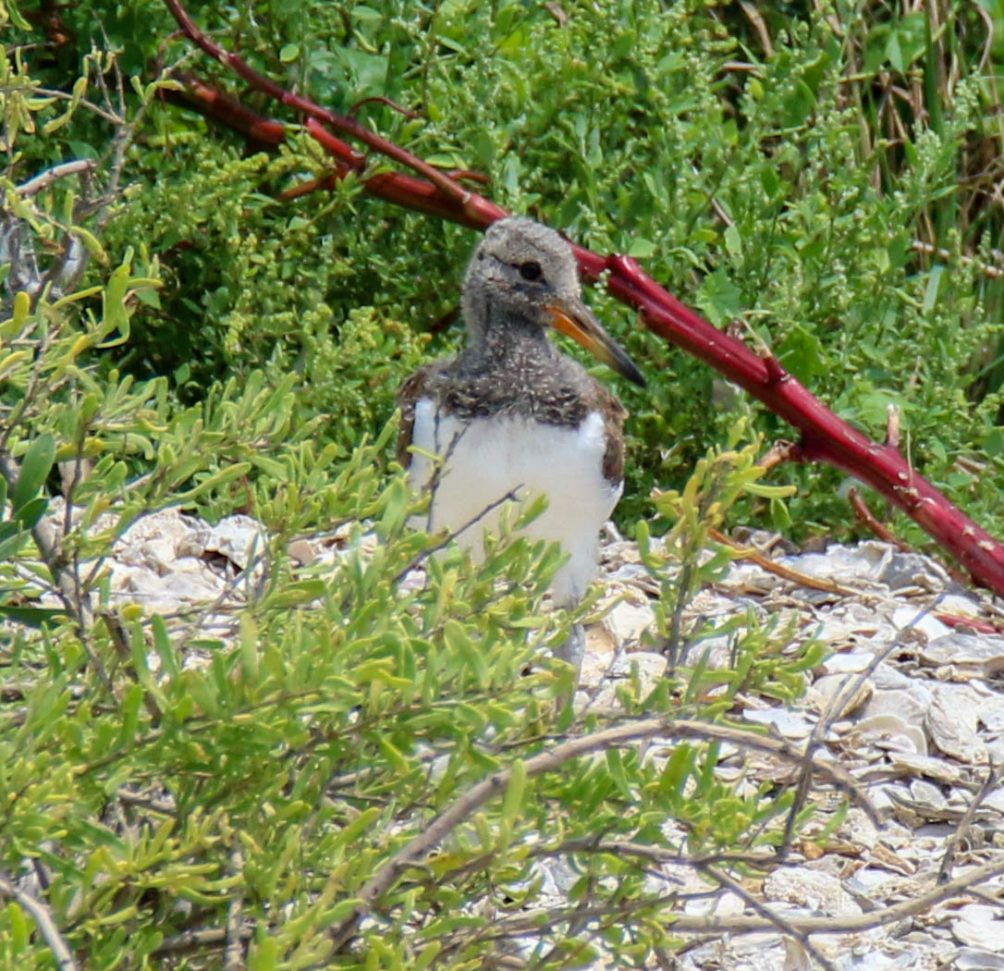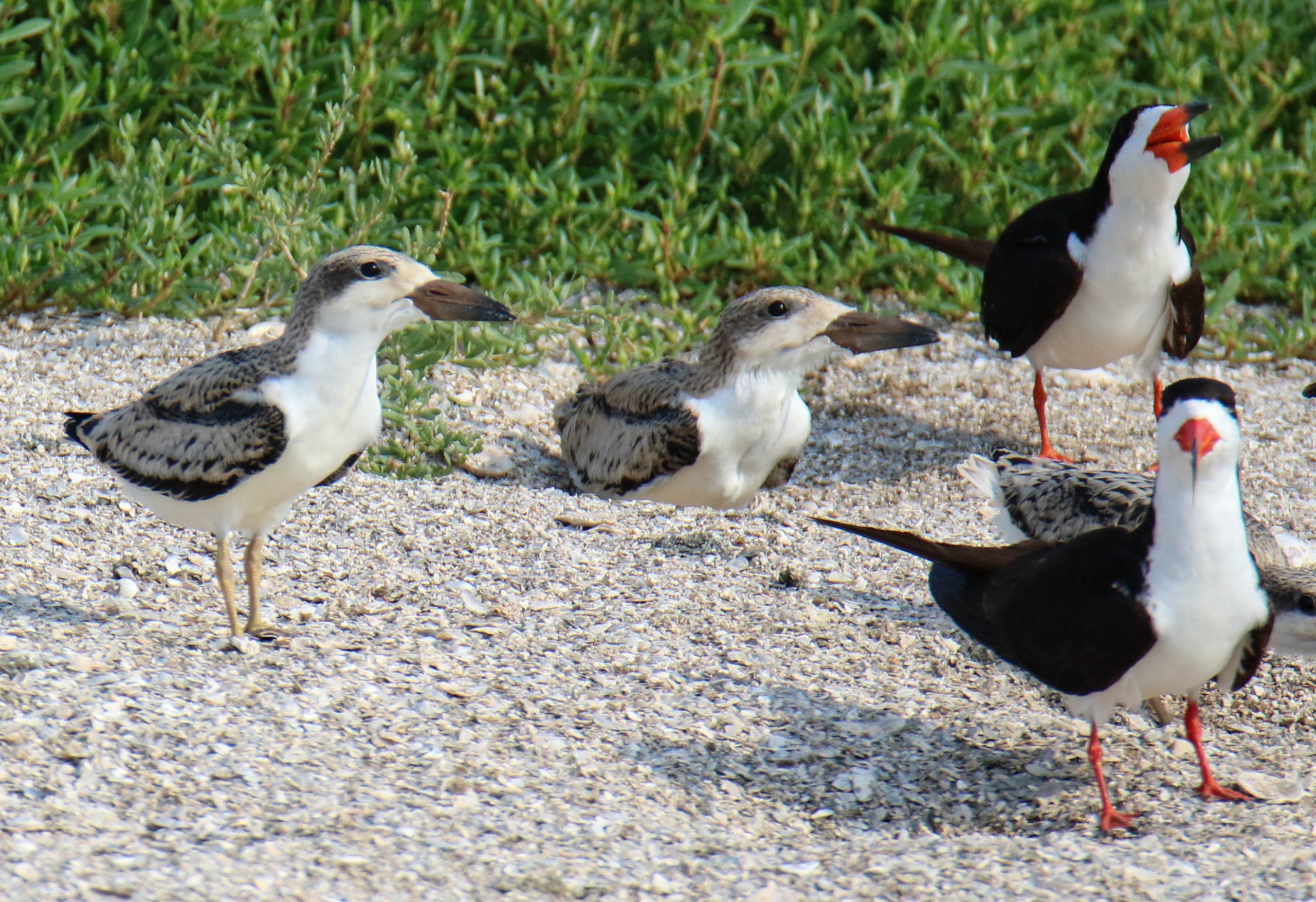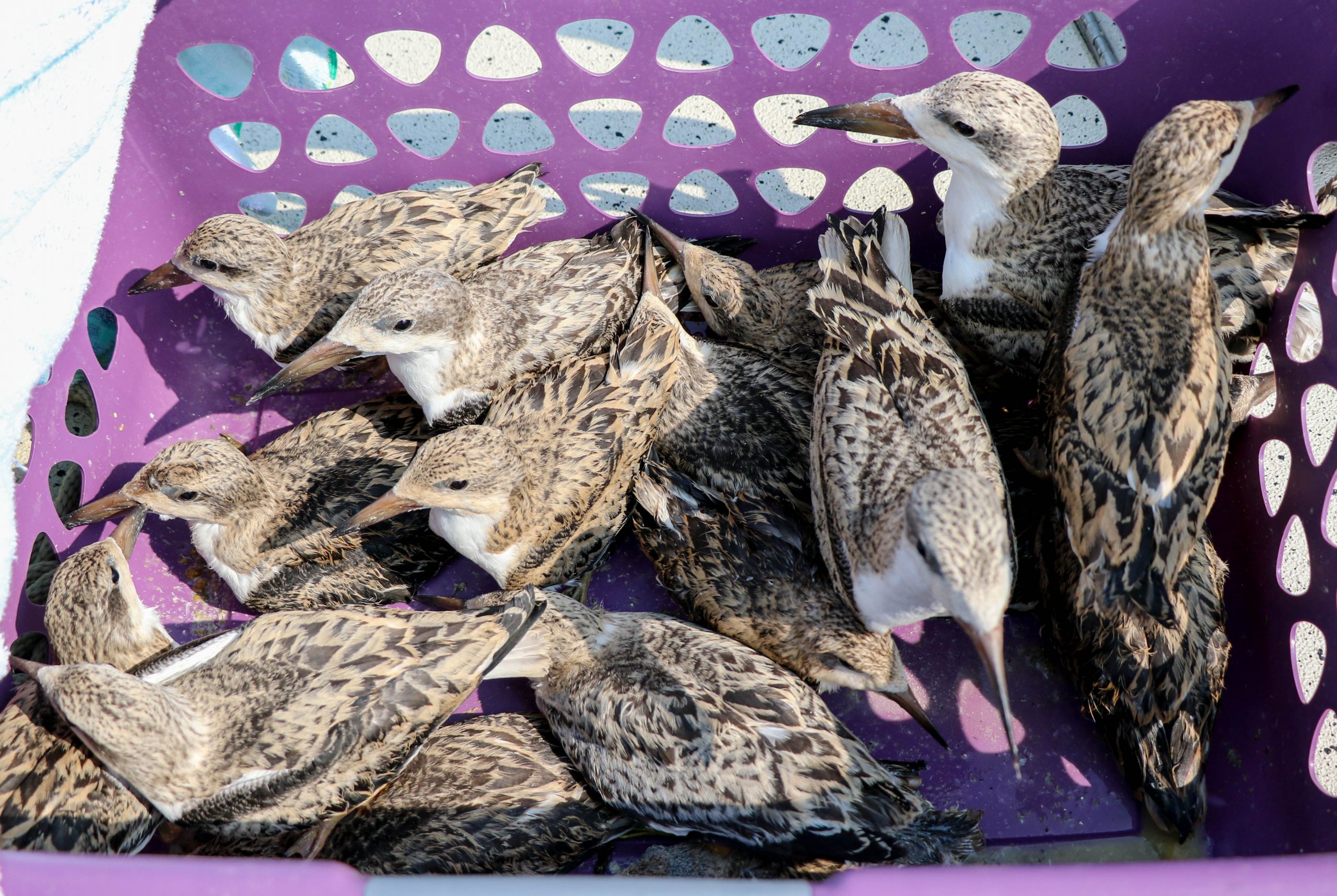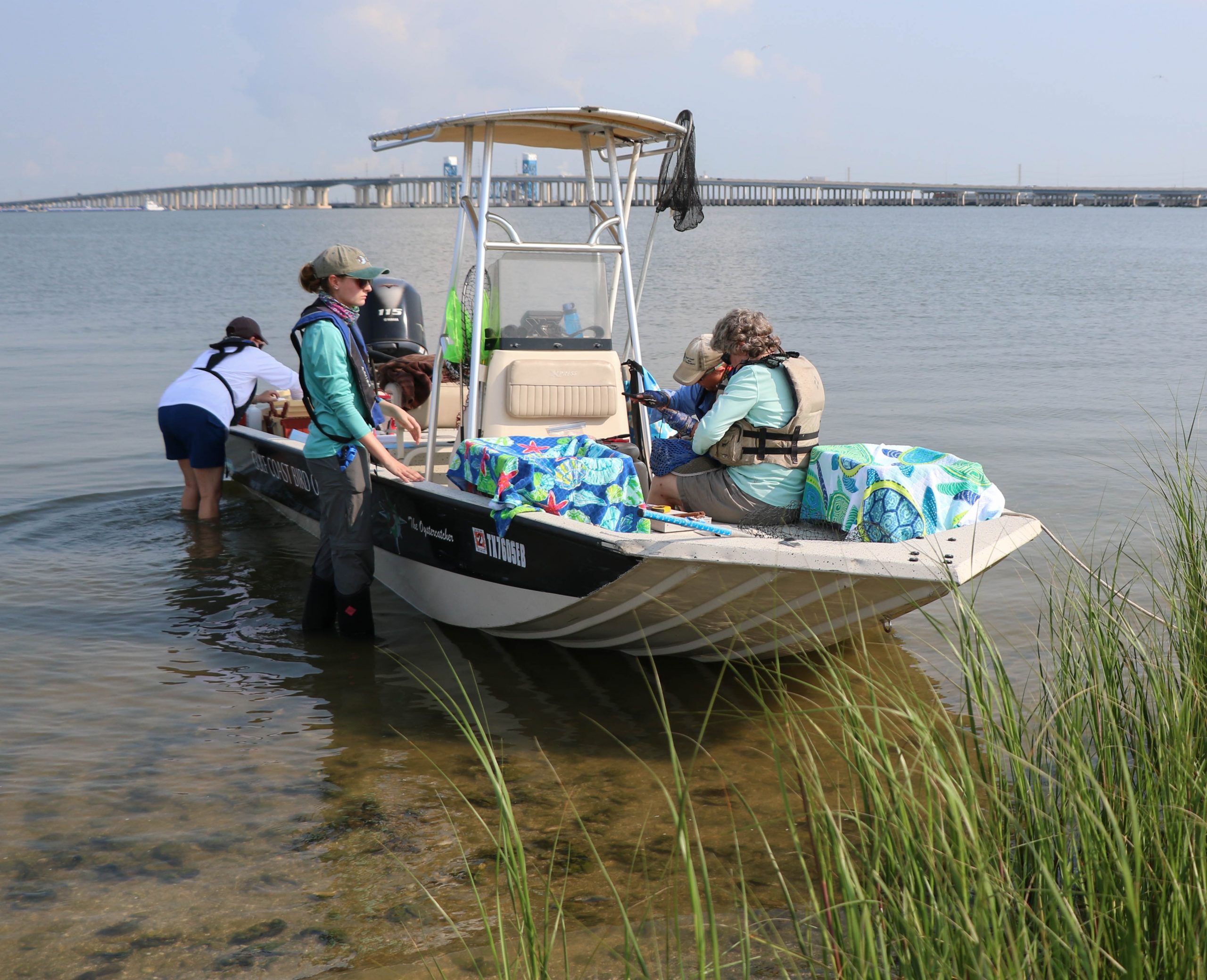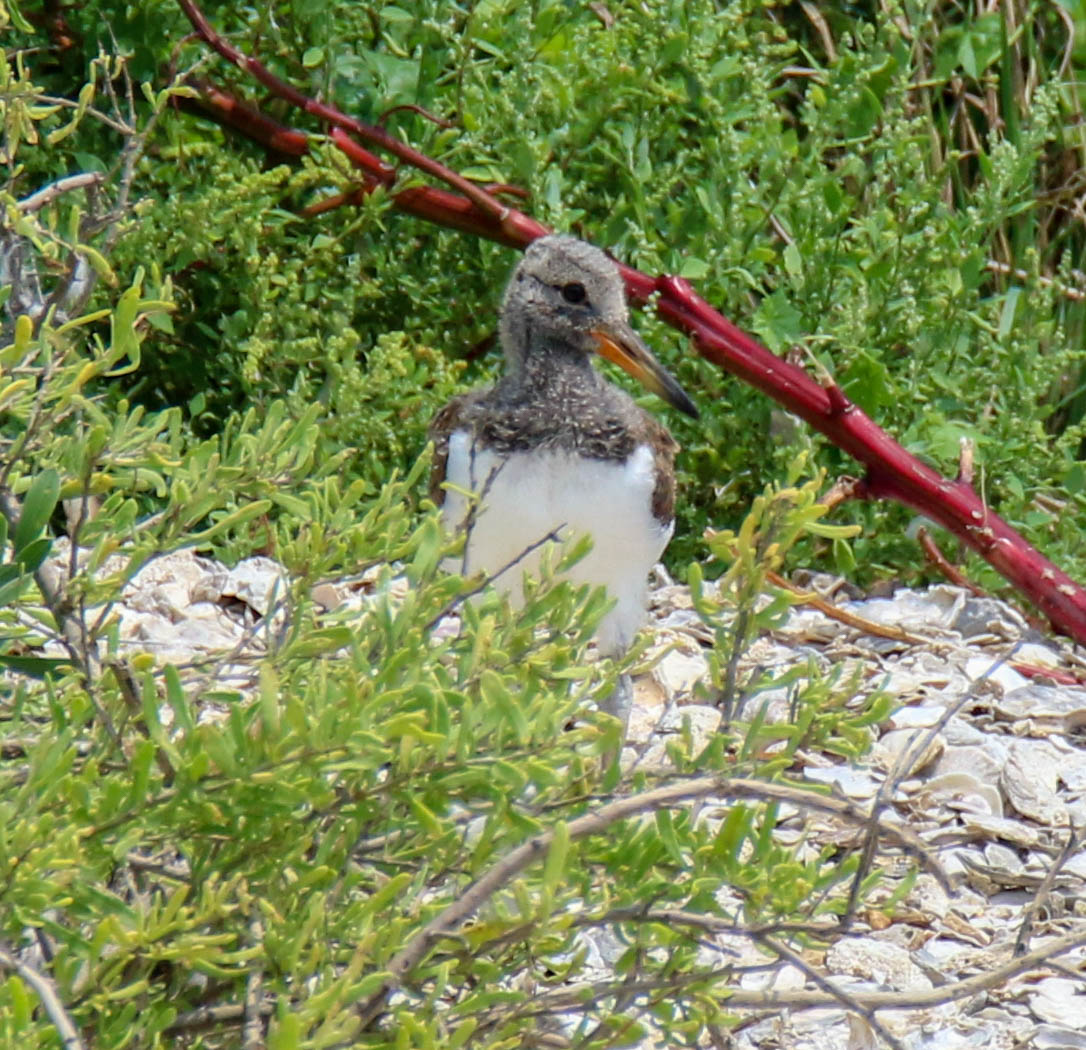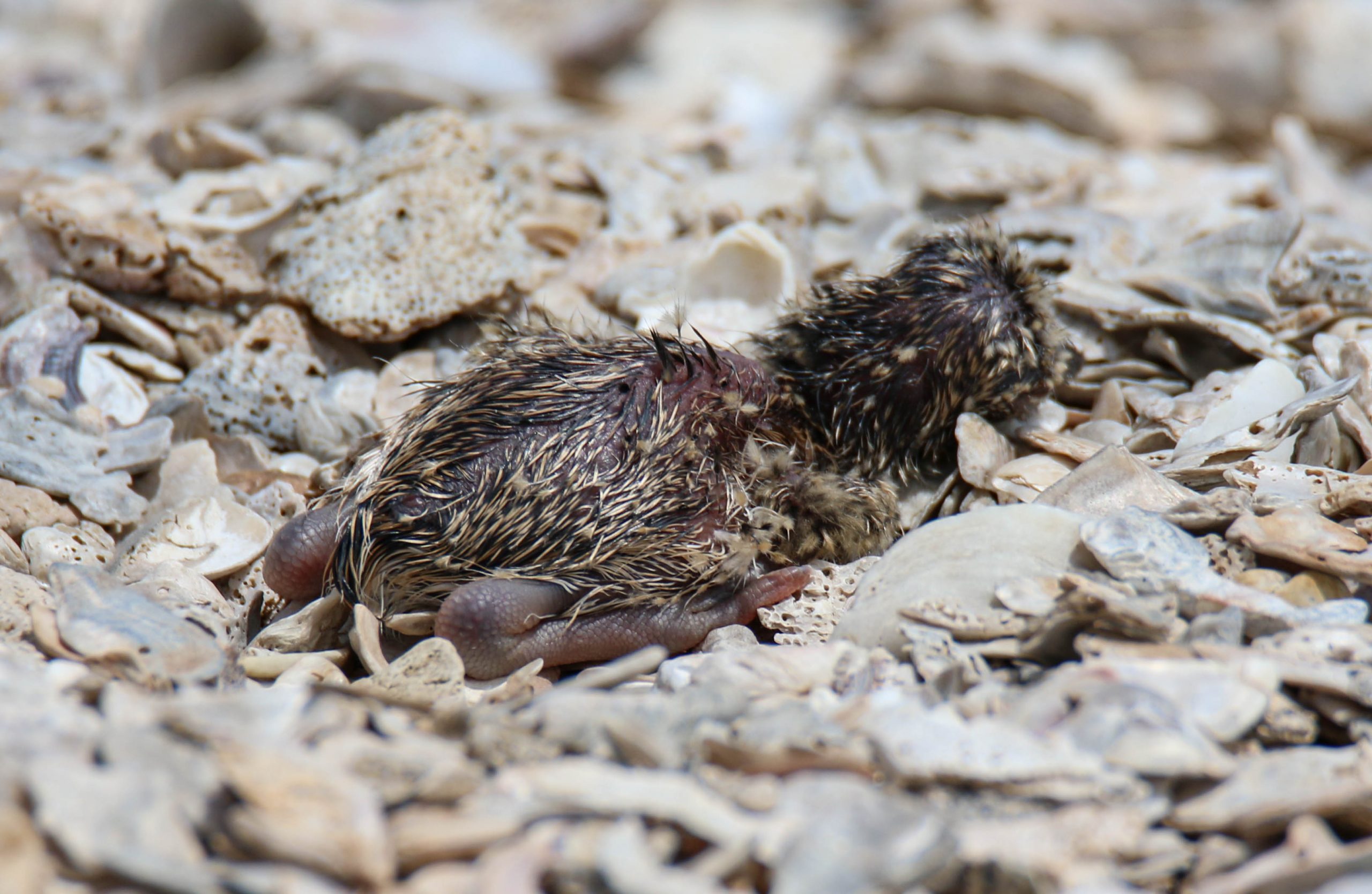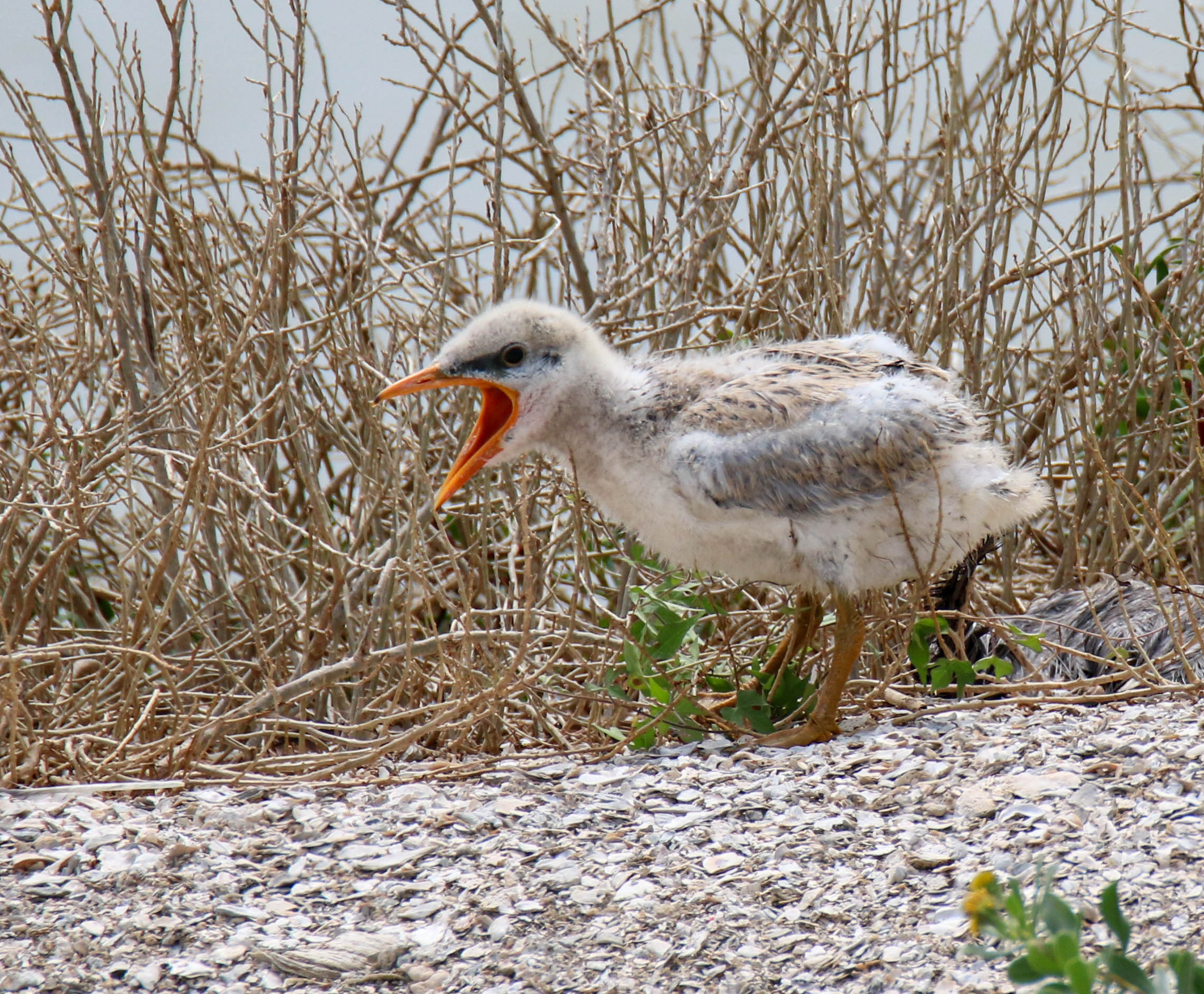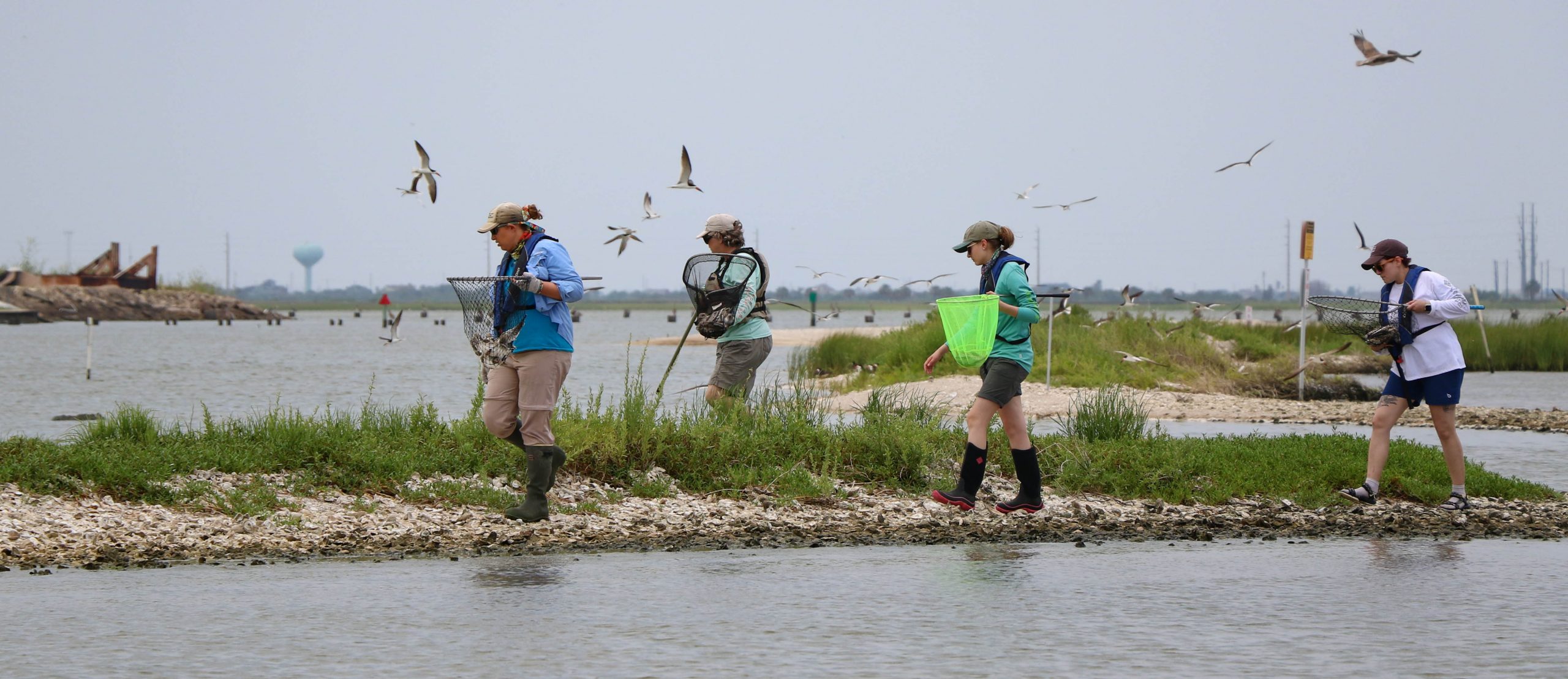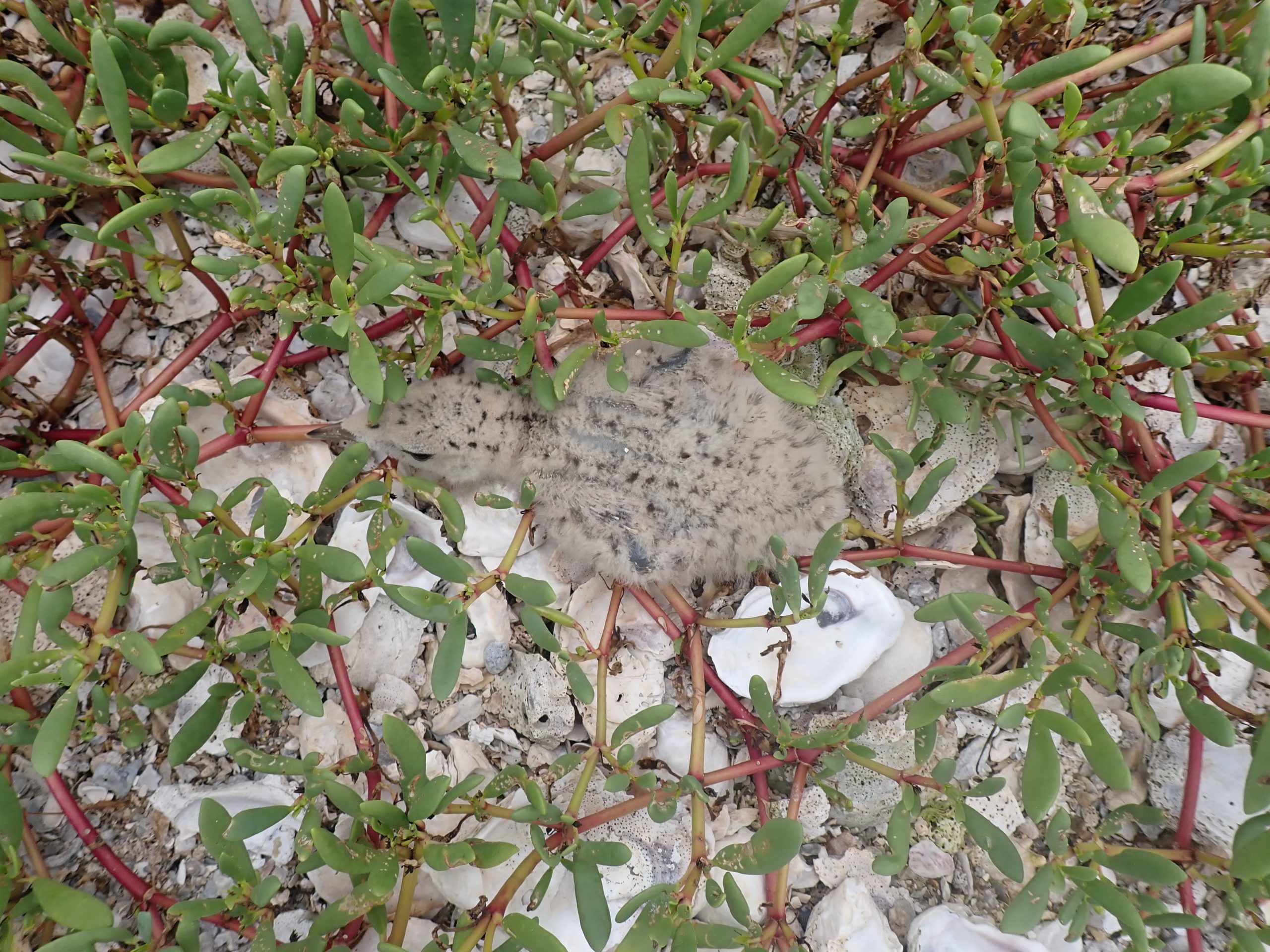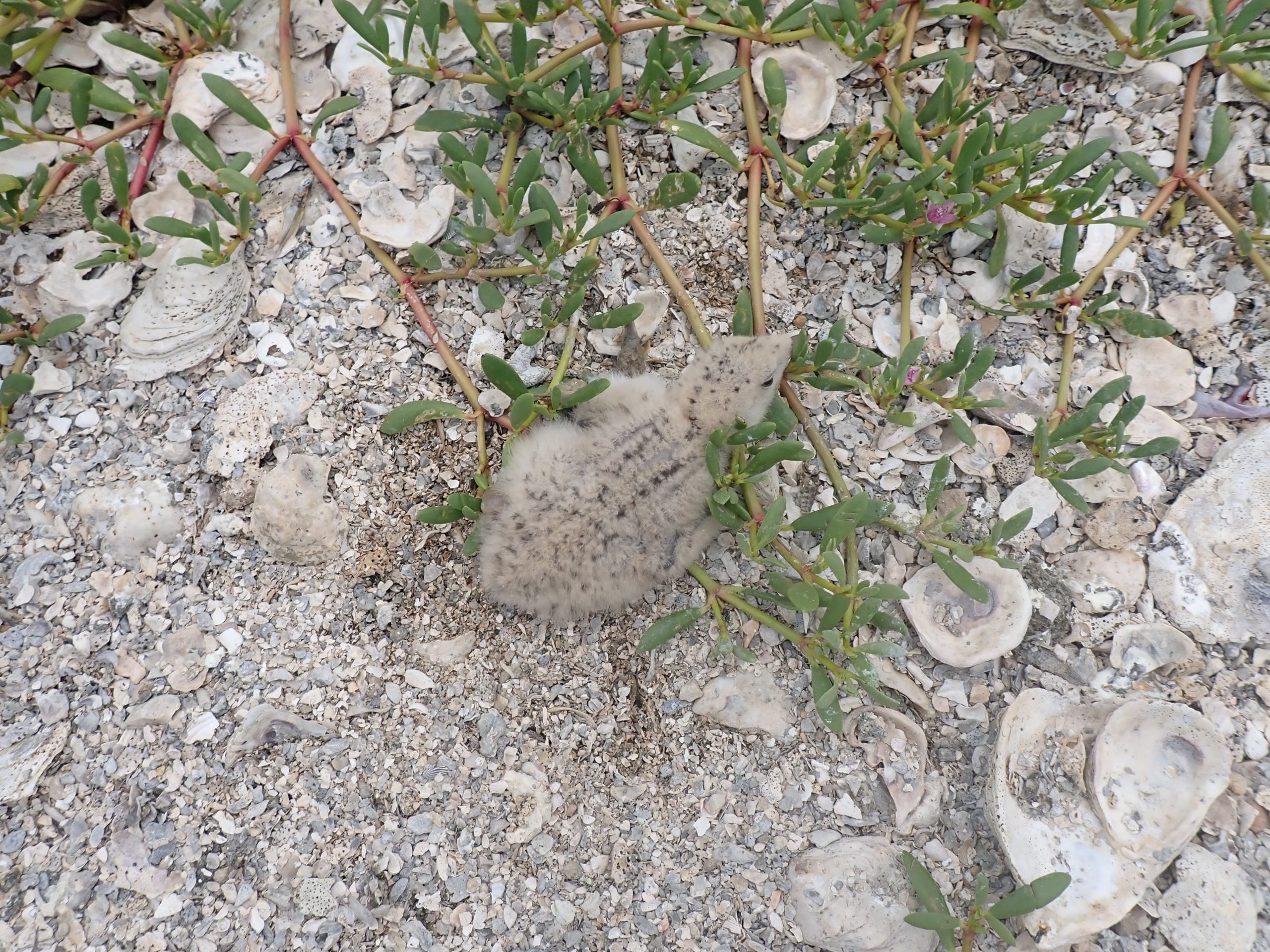By Susan Heath
This week was more about skimmers than oystercatchers. I assembled a team to band the skimmer chicks on Struve Luci so Alan and I were accompanied by Taylor Bennett (GCBO Coastal Biologist), Sarah Belles (GCBO intern), and Elena Iacono (TAMU grad student). Elena is working on her PhD and she is going to run a bunch of samples on the skimmers to see if we can figure out what is causing the primary growth anomalies that I’ve noticed over the past few years.
We headed straight to Struve to get started on the skimmers. They are divided into two groups on the island so we decided to tackle the two groups separately to minimize disturbance. We usually only collect a few chicks and band them so we don’t cause a lot of disturbance but this time we gathered up all of them so we could check each one’s primaries for anomalies. Thirty-six chicks! Wow that is great!
Taylor banded, I took measurements, and Sarah helped Elena take the blood and feathers while Alan tended the boat and released chicks as we were done with them. We keep them in a laundry basket covered with a towel while they are waiting to get banded and its pretty comical.
We banded 23 of them and just checked the wings on the others before letting them go. All of them were healthy and fine! Great news. I wasn’t really expecting to find any anomalies this year because it usually only happens during a drought year and this is definitely not a drought year!
We needed a break from banding so we went to check on the oystercatchers. There were a bunch of them at 8 Mile Road but they were very spooky and I’m not sure we got photos of them all.
We went to South Deer to check on A1A & unbanded and their chick. Sadly, the adults were not there which means something happened to the chick. I didn’t really want to believe this so we went over the breakwater at Gangs Bayou to see if the adults were there. Sure enough, we found them on the breakwater so their chick definitely didn’t make it. If it had they wouldn’t have been hanging on the breakwater. Dang it!
From there we went to North to check on the other pair with a chick C1A & unbanded. Happily we saw them along the shoreline and there was a big chick hanging with them! Yay! It ran up into the vegetation when the adults gave an alarm call but Alan managed to get a photo anyway.
We will band that little one next week! Then we went to check on W5 & JC. I didn’t think their egg would be hatched yet but it was! We discovered a just hatched chick that was still wet from the egg in the scrape. It looks like its dead in the photo but that’s just because it’s still wet! As soon as we left, JC ran back over and covered it up with her body to protect it. Such a good mom!
I couldn’t resist going back and checking on the Caspian Tern chick we saw last week. It was a bit bigger this week and Alan was able to get a good photo!
That dude’s got an attitude! We headed back to Struve to do the other batch of skimmer chicks. There were only 13 big ones on this part of the island so it went a little faster and we banded them all.
I noticed only two smaller chicks while we were gathering up the bigger ones. There hadn’t been any smaller ones on the other part of the island.
Great work team! We were all pretty dirty and stinky from handling all those chicks so we were glad to get back to the boat ramp and head home for a shower.
If you like oystercatchers and you want to support this project, you can make a donation (thank you!) on our website here. And how could anyone not like oystercatchers!
Current Stats for upper Texas coast from Dickinson Bay to East Matagorda Bay: 0 nests being incubated, 40 failed nests, 2 nests with unfledged chicks, 1 nest with undetermined status, 15 chicks fledged
Note: All trapping and banding for this project is in accordance with federal and state permits issued to Susan Heath, GCBO Director of Conservation Research. Bird handling by volunteers is only permitted in the presence of Susan Heath and volunteers are trained in proper bird handling techniques.

